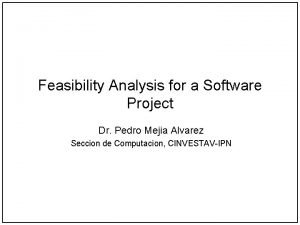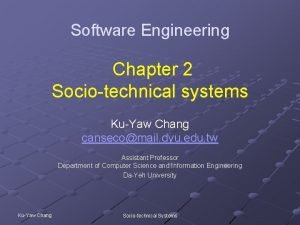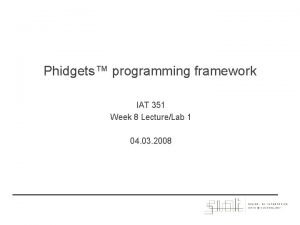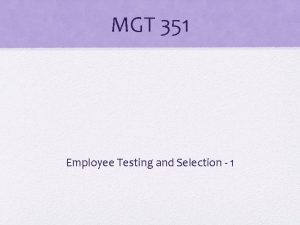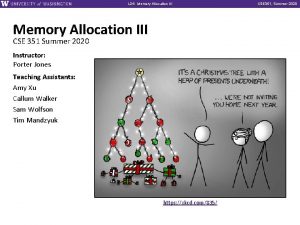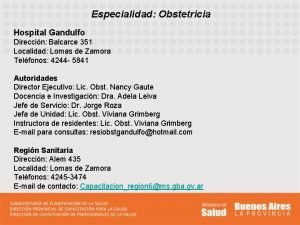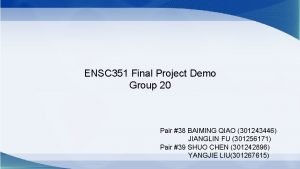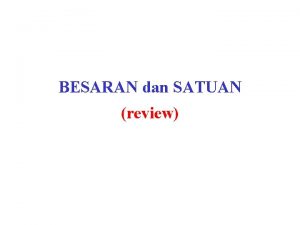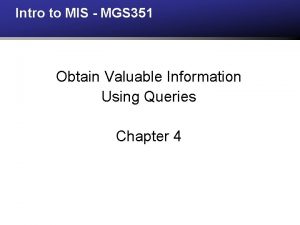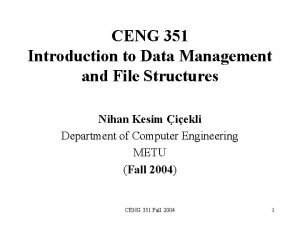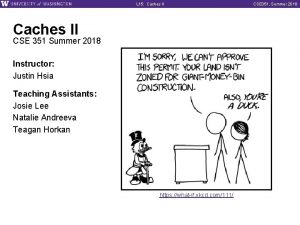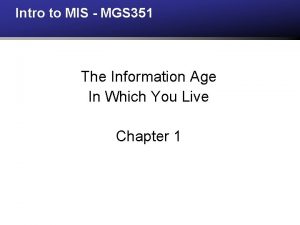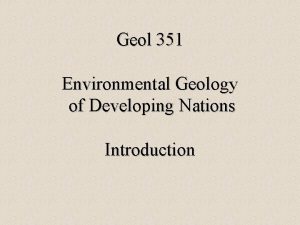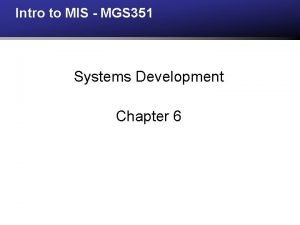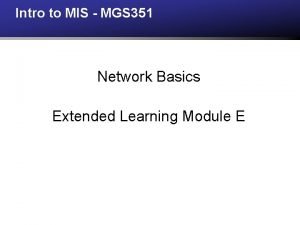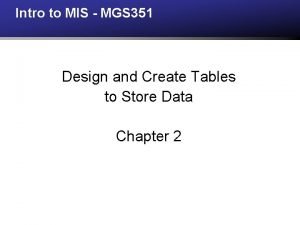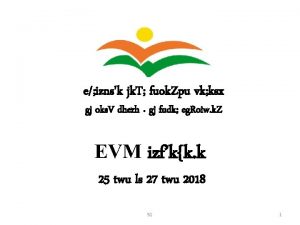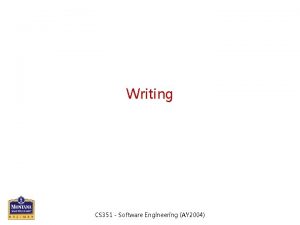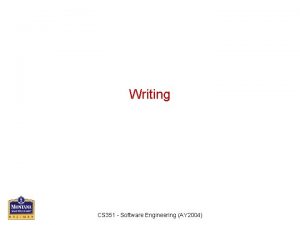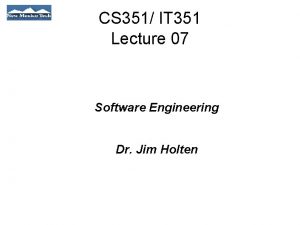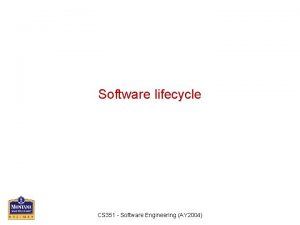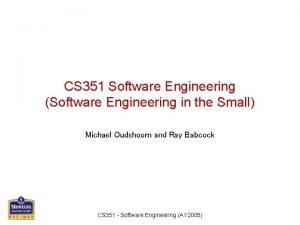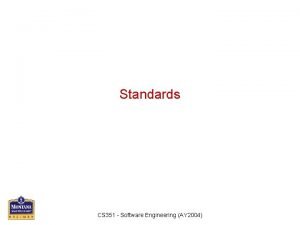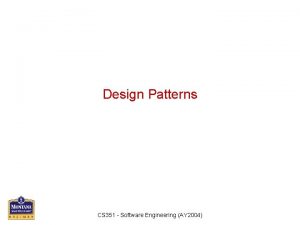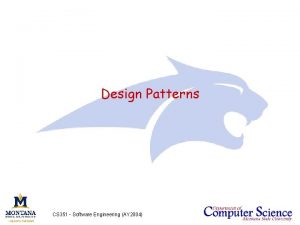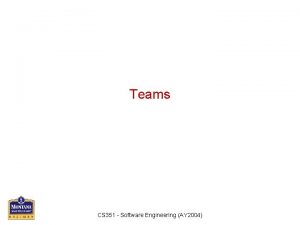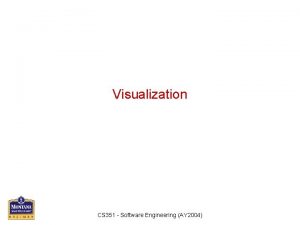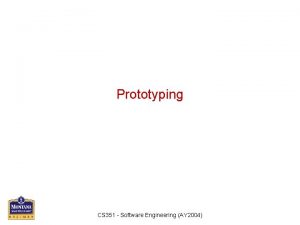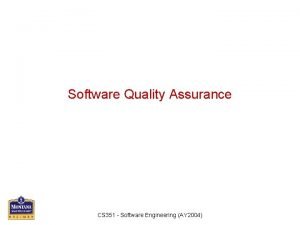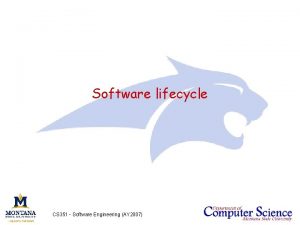Writing CS 351 Software Engineering AY 2004 Technical

















- Slides: 17

Writing CS 351 - Software Engineering (AY 2004)

Technical writing Structure Referencing Writing Style Tools Metrics CS 351 - Software Engineering (AY 2004)

Structure • Abstract – high level summary - wild claims • Introduction – expanded abstract - forward references • Body – the main points, in depth • Conclusions – summary of main results • References – where your citations come from. CS 351 - Software Engineering (AY 2004) 3

Abstract • High level summary – what the document is about, – it highlights theme of the document. • Mostly introduction and broad summary of results, – be careful of wild claims, – the document has to live up to the abstract. • An abstract may be optional, – write one anyway to get your ideas straight. CS 351 - Software Engineering (AY 2004) 4

Introduction • Expansion on the abstract, • States the important points, – give some context for each, – follow theme, – makes the document interesting. CS 351 - Software Engineering (AY 2004) 5

Body • In depth explanation of important points, – deal with main points in order, – add explanatory sections as required, – give as much depth as theme requires, – stick to the point. • Linkage – the introduction should flow into the body, – the sections should not appear isolated. CS 351 - Software Engineering (AY 2004) 6

Conclusions • Summarise – why the main points were important, – what was really demonstrated, – where is this all leading, – stick to the point. CS 351 - Software Engineering (AY 2004) 7

Referencing style • References should be cited when – Introducing a new concept, term, system, . . . – Place reference at the end of the term, concept, sentence. • References in the body – [x] where x is a number, or inits++year – examples [bro 95], [1], [4, 6], [bro 95 a, bro 95 b] • References section – [x] Surname, Inits, . . , Title, Where to find it, year, page nums. CS 351 - Software Engineering (AY 2004) 8

Writing style • Brackets () for asides, – replace these with commas, – better still, rewrite the sentence so that arent required. • Reread sentences your work to see that it makes sense. • Have someone else review your work, – they should pretend to be naive, – “what does this mean? ”, “I don’t understand” – forget your ego! CS 351 - Software Engineering (AY 2004) 9

Tools • Use grammer and spelling checkers. • Spell checking picks up non-words, – it doesn’t mean the spelling is correct. • Grammar checkers pick up some obvious errors, – sentences without verbs, repeat words, obscure language, . . – they may not suit your document type. CS 351 - Software Engineering (AY 2004) 10

Writing metrics • Readability measures – some systems can also score your style, – average sentence lengths. • Scores are based on grammar analysis, – year 8 is the target, – technical documents tend be to year 12 or later, – why? it is hard to be definitive and technically correct. CS 351 - Software Engineering (AY 2004) 11

Public speaking • Where to start • Structure • Construction CS 351 - Software Engineering (AY 2004) 12

Where to start • A clear statement of intention, – essential to keep it simple and to the point, – focus is everything (almost). • Be prepared, • Be comfortable - humour if you can do it, • Be interesting - understandable, up to date, • Be committed - believe in it. CS 351 - Software Engineering (AY 2004) 13

The proposition • You start with a subject, – too broad - but a start. • Define a theme, – specific aspect of the subject being presented. • Define a proposition, – the focus of the presentation. CS 351 - Software Engineering (AY 2004) 14

Structure • Introduction – state theme - show its relevance, – introduce the main points, – write this last, • Main Points, • Conclusion. CS 351 - Software Engineering (AY 2004) 15

Main points • Main points all support theme, – 3 or possibly 4, – repetition to help it stick. • Sub-points, – to clarify, expand, illustrate, apply each main point, • Length – by elaboration of the main points, – 30 -40 minutes is easy, – you only have 5 minutes. CS 351 - Software Engineering (AY 2004) 16

Conclusion • Summarise and challenge. • Structure, – restate main points, stress title, – restate application of main points, – optional illustration to make aim or purpose clear, – appeal. • Appeal to – desire, duty, fear, OR – deal with objections. CS 351 - Software Engineering (AY 2004) 17
 What is feasibility in software engineering
What is feasibility in software engineering Emergent system properties in software engineering
Emergent system properties in software engineering Difference between technical and academic writing
Difference between technical and academic writing Iat 351
Iat 351 Mgt 351 nsu course outline
Mgt 351 nsu course outline Cse 351 lab5
Cse 351 lab5 Balcarce 351 lomas de zamora
Balcarce 351 lomas de zamora Ensc 351
Ensc 351 43.351.097/0001-90
43.351.097/0001-90 Mgs351
Mgs351 Ceng351
Ceng351 Cse 351 lab3
Cse 351 lab3 Succeedsoft
Succeedsoft Geol 351
Geol 351 Define the eight stages of the sdlc
Define the eight stages of the sdlc Mgs 351
Mgs 351 Mgs 351
Mgs 351 +39 351 0787268
+39 351 0787268
